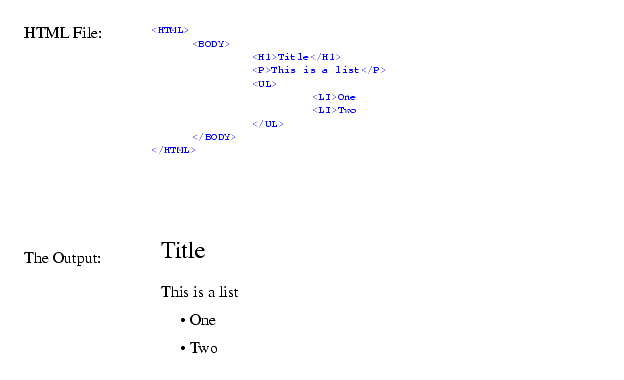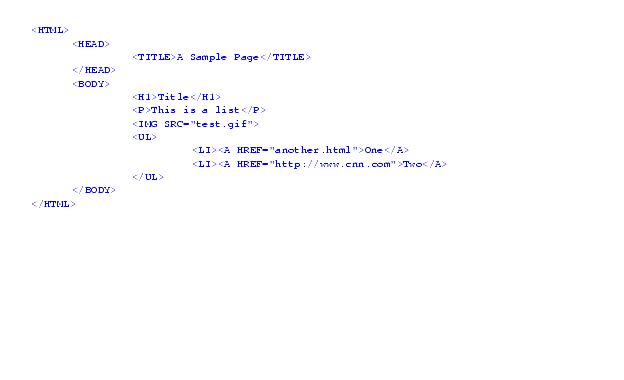
|
|
|
7.3 FORMATS
������������Formats are different from protocols, although they are often confused. Protocols are used for transferring information, but formats define the information format. For example, http is a protocol often used for transferring files. The most common file format transferred with http is html, although it can transfer other types of files.
7.3.1 HTML
������������Hyper Text Markup Language (HTML) is the defacto standard format for information on the World Wide Web (WWW). It basically allows text to be generally formatted with embedded images. When viewed, the display is adjusted to suit the browser. These documents also include hypertext links that allow a user to go to another HTML page, or download a file by 'clicking' on linked text. Recently there have been many additions that allow more control over the 'look-and-feel', but result in larger files and less portability. HTML files can be created with programs, or edited by hand.
A simple HTML file is shown in Figure X.X. It uses tags to define the beginning and end of definitions. The entire document begins and ends with the tags '<HTML>' and '</HTML>'. The body of the document begins and ends with '<BODY>' and '</BODY>'. Highlighted text is between '<Hx>' and '</Hx>', where 'x' varies from '1' for the boldest to '5' to the lightest. Lists can be defined with the tags '<UL>' and '</UL>', and each point in the list begins with '<LI>'.

Figure X.X - A Simple HTML File and The Output
The file in Figure X.X add a few features to the previous example. The first part is a header section that defines a title of the document. This title will appear on the top bar of the browser window. An image will appear after the heading and before the list, the image displayed is called 'test.gif'. The two items in the list now have hypertext links. The first is to a file called 'other.html', the second is to another web site 'www.cnn.com'.

Figure X.X - A More Advanced HTML File
7.3.2 URLs
������������In HTML documents we need to refer to resources. To do this we use a label to identify the type of resource, followed by a location.
Universal Resource Locators (URLs)
7.3.3 Encryption
������������Allows some degree of privacy, but this is not guaranteed.
Basically, if you have something you don't want seen, don't do it on the computer.
Search for More: |

Custom Search
|

|